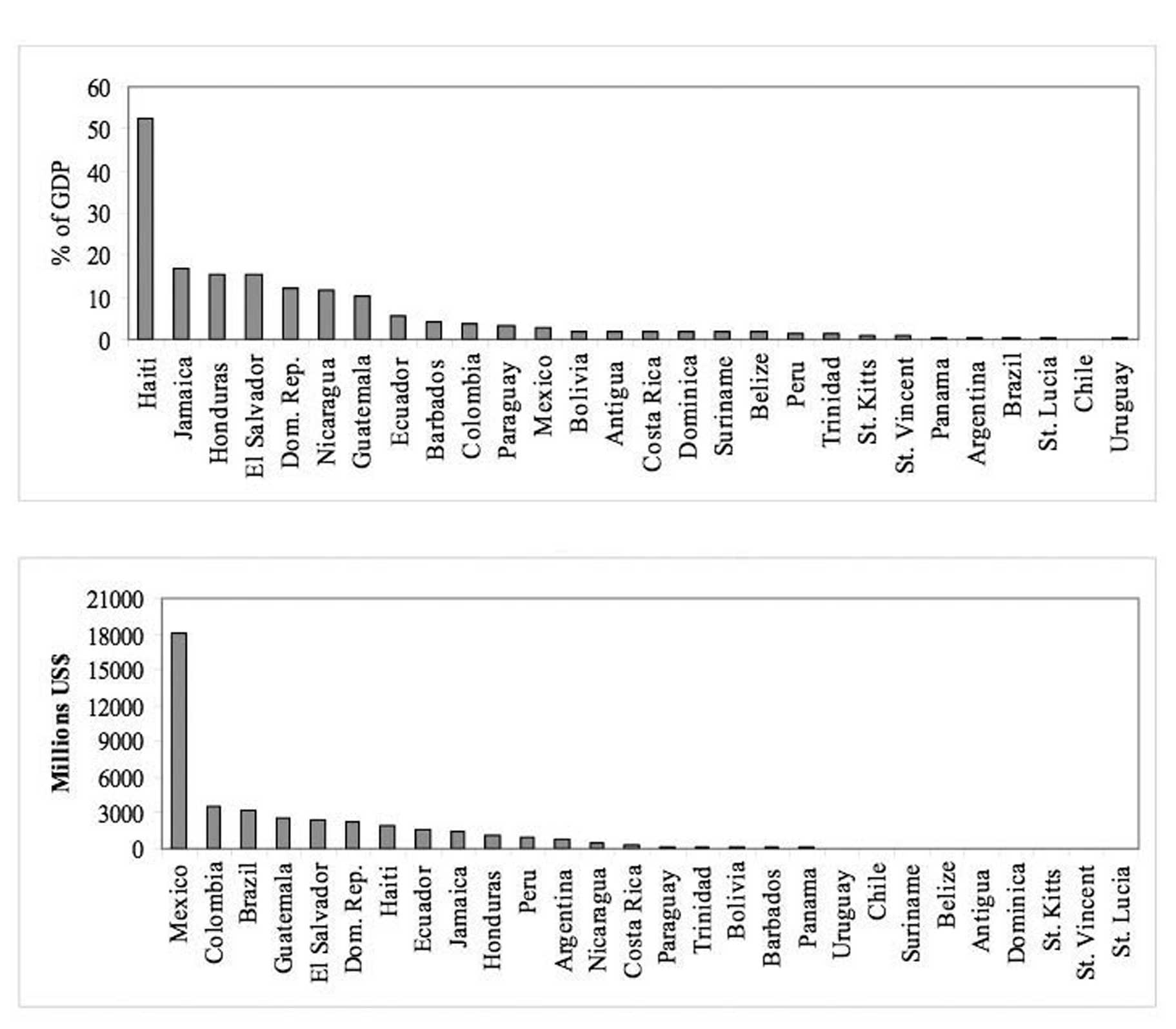
| Previous | Return to table of contents | Search Reports | Next |
| « Back to weltagrarbericht.de | ||
Agriculture in Latin America and the Caribbean: Context, Evolution and Current Situation | 23

Figure 1-5. International remittances to Latin America and the Caribbean, 2004. Source: Acosta et al., 2007
|
of deforestation has occurred in South America, driven by deforestation in the Amazon; from 1981 to 1990, 6.2 million ha were stripped of forest annually in South America. However, since 2004 deforestation in the Brazilian Amazon fell by 60% due to stepped up enforcement efforts (Presidencia da República [Brazil], 2007) and lower commodity prices, namely beef and soybean and the strong Brazilian currency, which has lowered the level of land speculation (Butler, 2007). However, the growing demand for corn ethanol means that less soybean is being planted in the United States and Brazil, the biggest producer of soybean in the world, is making up the shortfall by clearing new land for soybean cultivation. Whether it will result in an increase in deforestation rates in the Brazilian Amazon or the cerrado remains to be seen (Butler, 2007). Soybean expansion has also affected forests in Argentina, where the rates of deforestation have increased dramatically in the last decade (Grau et al., 2005). Nevertheless, the highest rates of deforestation have consistently been found in Central America and Mexico, where deforestation in the same period reached 1.5% annually, compared to 0.7% in South America. In the Caribbean, most deforestation occurred in the 1800s and with a few exceptions (particularly the Dominican |
Republic), most primary moist forest suitable for agriculture had already been converted prior to the middle of the last century (Myers, 1980; Toledo, 1992). In the last decade of the 20th century, the rate of deforestation slowed throughout the region, but this slowdown was marked in South America (to 0.44% annually) and barely registered in Central America and Mexico, which still racked up 1.47% annual deforestation in that period. During this decade, forest area actually grew in the Caribbean (at 0.1% annually), driven by a rise in forested area in Cuba. It is notable that both the absolute and relative rates of deforestation in Latin America and the Caribbean during the 1980s were much higher than any other region of the world, but by the 1990s Africa had surpassed Latin America in both hectares cleared and annual deforestation rates (Barbier, 2004). Latin America and the Caribbean are considered to have the most diverse freshwater ecosystems in the world. The region is home to one-quarter of the world’s species of fish, with areas of high endemism. The Amazon in particular is noted for high freshwater fish biodiversity and tropical South America in general is a hotspot for amphibian diversity. The Caribbean and Central America are noted for their outstanding coral reefs. The Mesoamerican Reef, off the |
| Previous | Return to table of contents | Search Reports | Next |
| « Back to weltagrarbericht.de | ||